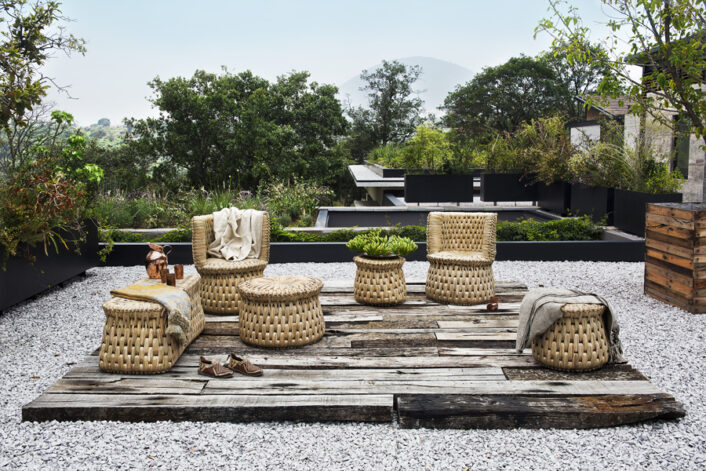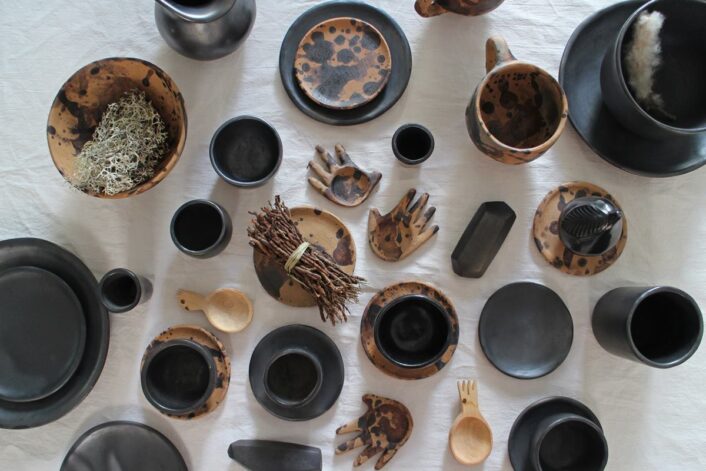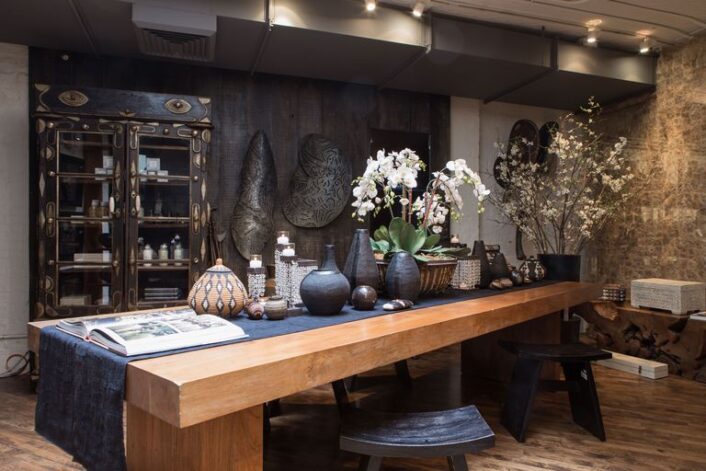Culture
St. Frank
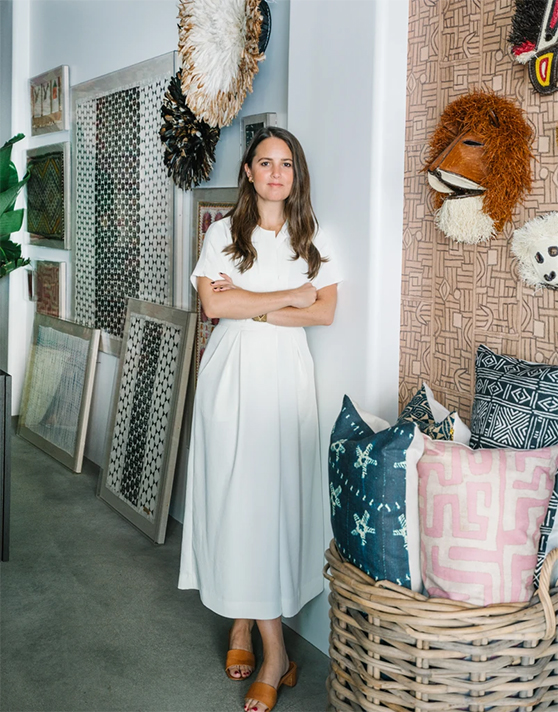
Bryant’s inspiration for starting St. Frank occurred in Rwanda where she met a wonderful community of artisans who were working in traditional crafts. She instantly fell in love with their wares… and of course, the stories behind the stunning handiwork.
Image courtesy of: Artemis Design Co.
Launched in 2012, St. Frank is the brainchild of Christina Bryant. The story behind its founding is almost as fascinating as the items themselves. The art history major at the University of Virginia, Bryant began her career at MOMA and decided to move to rural Rwanda to work in international development for Partners In Health, a non-governmental healthcare organization.
That experience in Africa inspired Bryant to get her MBA at Stanford University…it was during that time that she began to work on St. Frank. Bryant’s extensive experience would have proven beneficial in a corporate setting; but her heart was “not there.” She says (courtesy to an article with Vivienne Decker for Forbes Life), “From the outside, my career path was unusual, even confusing, with a wide mix of experience. In a corporate setting, this may not have served me well. That said, every experience that I had led me to this point and enabled me to create a company that embodies all of the aspects of who I am and what I value. I always allowed myself to pursue and develop my interests- art, international, development, and business- outside of a traditional career context, and I’m so glad that I did.”
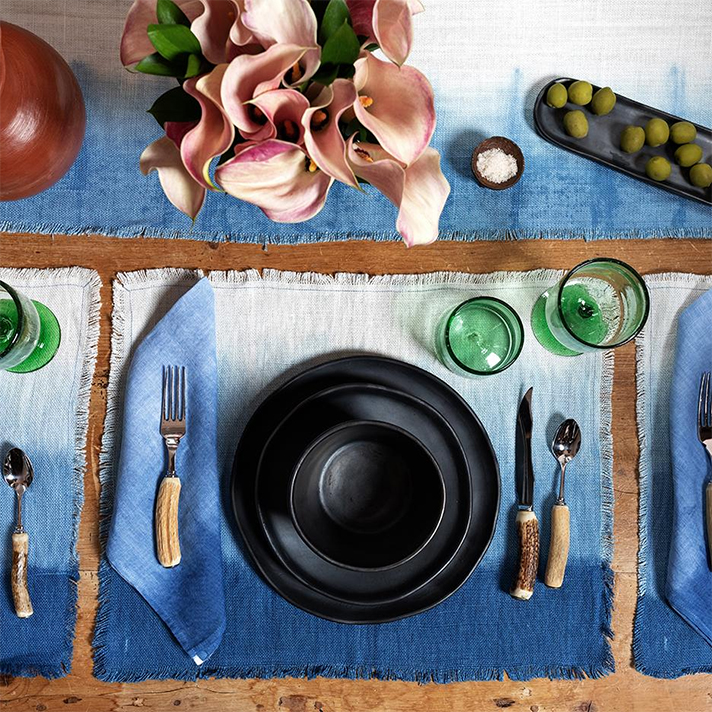
Black Clay plates handmade from black clay (barre negro) from Oaxaca, Mexico. The distinct color is due to a natural oxidation process. Fired at high temperatures, this technique has been used in the Oaxacan valley for many, many years. It is known to reduce porousness and increase durability.
Image courtesy of: St. Frank
Bryant wanted to purchase and import items from Rwanda; however she decided that instead, she should start designing products with the artisans personally. Initially, she started with apparel and accessories, but this quickly morphed into home decor items. It was once she started decorating her own home that the entrepreneur realized she wanted to present somewhere that spoke of her values. In addition, it was important to her that her home display “her story” of worldwide travels to interesting locales. Most vital however was Bryant’s desire to make sure the authentic products were ethically sourced and full of interesting tales.
Bryant soon concluded that items fitting those criteria were difficult to find…she also understood that her friends and most Millennials had similar criteria when purchasing goods. The impetus was there to create a new sort of home brand that would check the boxes for consumers who were similar to Bryant.
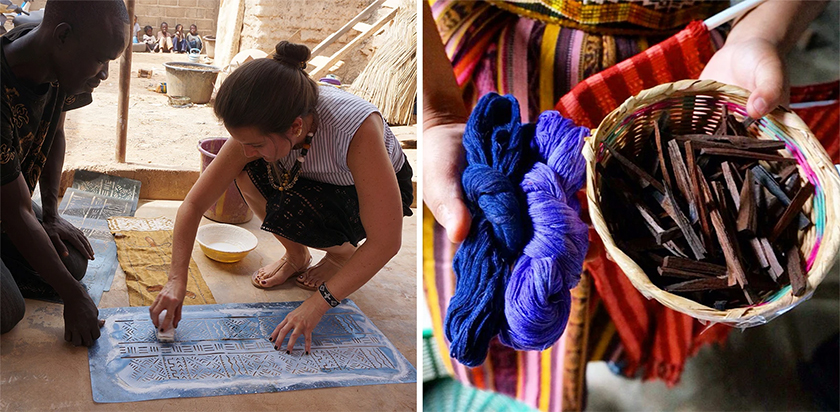
Bryant visiting one of the artisans St. Frank works with.
Image courtesy of: Studio Four NYC
Bryant’s mission for her home is that she fill it with items that spoke of her “values as a global citizen.” When her first purchase became a conversation piece, Bryant realized that, “Instead of shopping from a brand I loved in the U.S., I was collecting pieces on my travels and finishing them at home by framing, or creating a pillow. I wanted my home to tell the story of who I am, and that desire was the foundation for building St. Frank.”
The company started off small, initially funded by close friends and family who believed in both Bryan’s philosophy and her brand. Two years later, St. Frank was raising money for a second round of financing. There was a quick realization that protecting the brand was of utmost importance. In addition, there was a need to focus on a long-term vision. Rather than accepting short-term business opportunities that added to the bottom line; the company focused on staying true to their vision and only partnered with like-minded investors “who want to build a quality brand with lasting value and understand what that path looks like.”
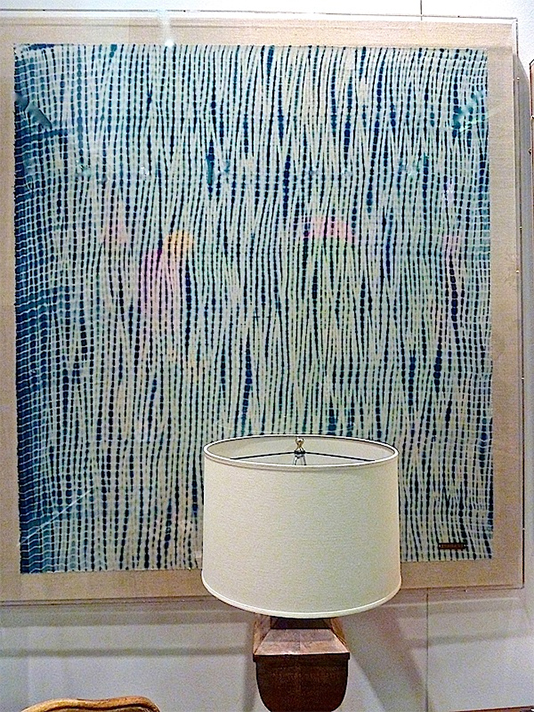
A collaboration with Aboubakar Fofana, an African artist who is dedicated to preserving a quickly disappearing art. The artist studied in France, Japan, and Mali along some of the most renowned (and remaining) indigo dye masters. After apprenticing with them, he found local craftsmen and farmers who he trained to grow organic indigo and cotton, and dye it at his workshop in Mali.
Image courtesy of: Quintessene Blog
St. Frank’s first physical location was in San Francisco; now, there is a location in Palm Beach, Pacific Palisades, East Hampton, and New York City. The Tribeca space also operates as the brand’s workspace; it is partially dedicated to the trade, although anyone who makes an appointment can visit.
The textiles on display are striking and unique. Whether it is organic indigo which is created from the tradition of indigo dying across North Africa, or perhaps it is Egypt or West Africa’s practice of dyed fabrics in an indigo color to symbolize wealth and the passage from this world to the afterworld…in such, linking heaven and earth; St. Frank helps artisans in remote stretches from around the globe by providing jobs, training and holistic support to underprivileged communities.
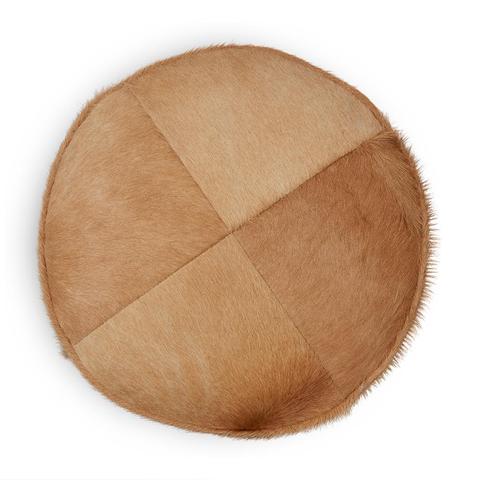
The Palomino Cowhide Pouf Ottoman is handcrafted from Forsyth cow hides. All poufs are hand-cut, hand-stitched, and hand-stuffed.
Image courtesy of: St. Frank
The collection consists of three parts: contemporary handmade, vintage, and printed pieces. The contemporary handmade items are made by artisans in under-resourced environments who are aided by the job opportunities. In addition, this is a lifeline to preserving often dwindling heritage crafts. Vintage items are found at small business settings. The value of these pieces is that they are naturally recycled and this minimizes a carbon footprint. Finally, print reproductions benefit the artisan partners through royalties and the company’s Artisan Support Fund.
Whoever is helping and whomever they are aiding, St. Frank is a wondering amalgamation of unique and one-of-a-kind pieces that continue to inspire…all while telling a fabulous story.
